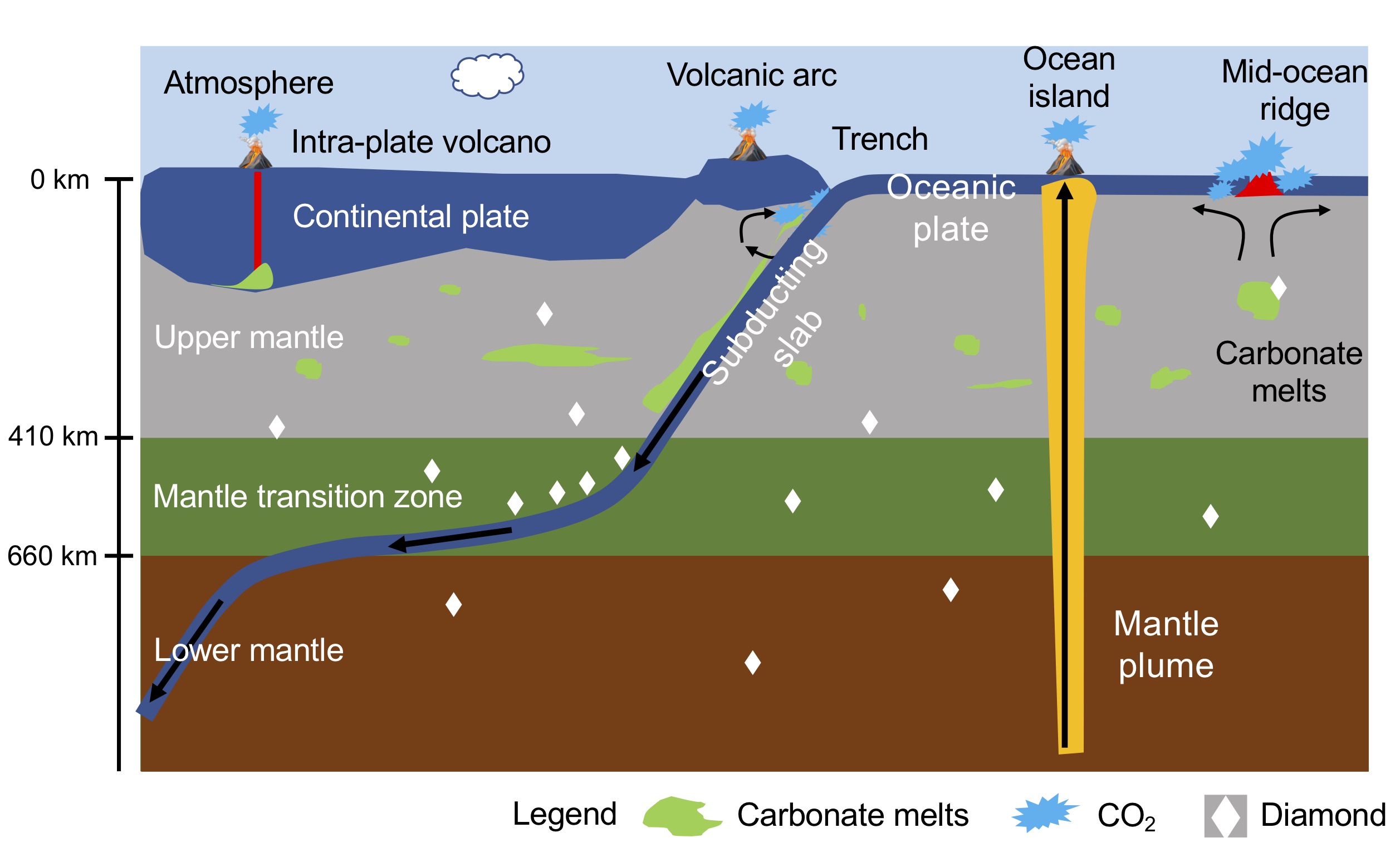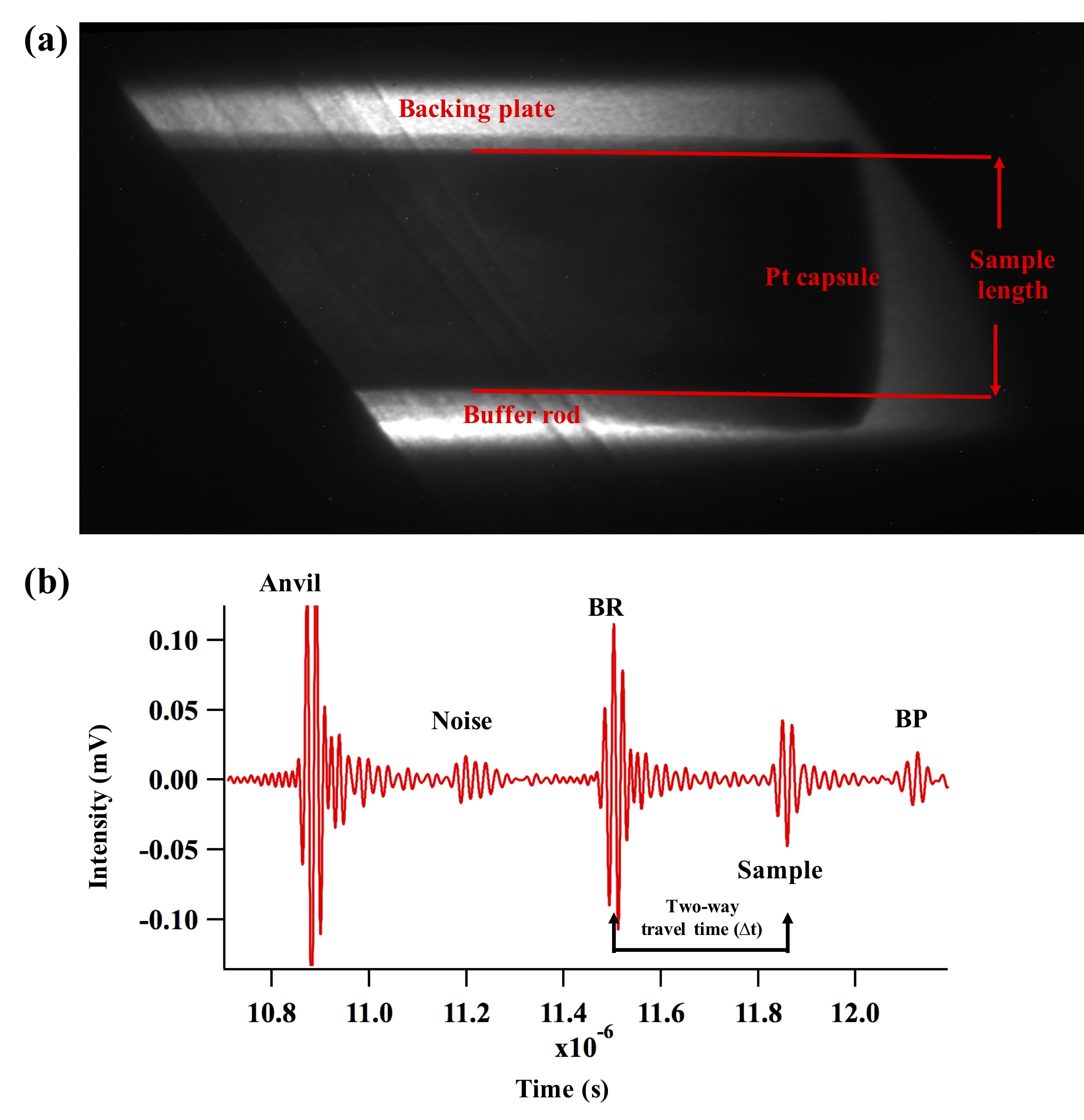New study reveals large carbon reservoir in the Earth' s deep upper mantle
2020-07-28
The deep carbon cycle is better understood now, thanks for cutting-edge research led by scholars at Southern University of Science and Technology (SUSTech). It provides a better insight into how carbon is stored in the deep interior of the Earth, helping other researchers in their understanding of a wide range of other research fields.
On July 20, Associate Professor Zhicheng Jing (Earth and Space Sciences) has led his research team to publish a ground-breaking research paper. Their paper, titled “High-pressure elastic properties of dolomite melt supporting carbonate-induced melting in deep upper mantle,” was published in the high-impact academic journal, Proceedings of the National Academy of Sciences (PNAS) (IF = 9.412).
Carbon is one of the fundamental elements that constitute the Earth’s life and chemical energy resources. It is also a significant factor in controlling global climate change. More than 90% of the Earth’s carbon is stored inside the Earth’s interior. Understanding the cycling of carbon between the surface and internal layers of Earth, including the mantle and core, is essential to understanding the formation of habitable conditions on Earth and the long-term climate change. Surface carbon, in the form of carbonates, is brought into the deep mantle by subducting oceanic plates at ocean trenches. It is returned to the atmosphere as carbon dioxide (CO2) through mantle melting and magma degassing processes at volcanoes, to complete the deep carbon cycle.

Figure 1. The Earth’s deep carbon cycle and the presence of carbonate melt in the upper mantle
During the deep carbon cycle, the presence of even a tiny amount of carbonate can significantly reduce the melting point of mantle rocks. It results in pockets of carbonate-rich mantle melt distributed along the grain boundaries of mantle minerals. The distribution and transport of carbon-bearing melt in the mantle is of great importance to determine the spatial extent and time scale of the deep carbon cycle.
Previous geochemical studies had indirectly demonstrated the presence and importance of carbonate melts in the depth mantle. However, limited by experimental techniques, researchers know little about the seismic wave velocity and elasticity of carbonate melts under high-pressure and high-temperature conditions relevant to the deep mantle. These properties are required to compare seismic observations for detecting carbonate melts in the deep mantle.
In their paper, the research team determined the sound velocity and density of dolomite melt (CaMg (CO3)2), under upper mantle conditions up to 6 GPa (6 million atm) and high temperatures of nearly 1800 degrees Celsius. It is the first experimental study for those properties of carbonate melts in the mantle. These measurements were enabled through experimental techniques developed by the research team for measuring physical properties under high P-T conditions. Their techniques used large volume hydraulic presses and synchrotron X-ray techniques. The results can be compared with seismic observations directly to detect carbonate melts.

Figure 2. High-pressure ultrasonic measurements of sound velocity of carbonate melts (a) Sample length measurement (b) Measurement of sound wave travel time in the sample
The paper also reported first-principles molecular dynamic simulation of the physical properties of carbonate melts. It showed calculation results consistent with the experimental outcomes. The combination of experimental and simulation results placed tight constraints on the effects of carbonate melt on the seismic wave velocity of the upper mantle.
The study found that the presence of a tiny amount of carbonate melt can significantly change the ratio of the compressional (P-) to shear (S-) wave velocity (VP/VS) of the mantle, despite that it has a minor effect on the absolute values of both velocities. Compared to seismic observations, the minimal presence of carbonate-rich melt explains the abnormally high VP/VS ratio at 180-330 km depth in the deep upper mantle. That would suggest that such trace amounts of carbonate-rich melt could be widely distributed across the boundaries of upper mantle minerals. It represents a carbon content of 80-140 ppm, supporting previous indirect geochemical estimates of the mantle’s carbon content. The estimated total mass of carbon in the mantle would amount to more than twenty thousand times larger than what is present in the atmosphere, representing an essential carbon reservoir.

Figure 3. Comparison of VP/VS ratios between experimental results and seismic observations suggests the presence of carbonate melts at 180-330 km depth in the upper mantle
The first author of the paper was Case Western Reserve University doctoral student Xu Man, who was a visiting student of SUSTech. Dr. Zhicheng Jing is the sole correspondent author, with SUSTech as the correspondent institution. Other contributing authors came from Case Western Reserve University, Florida State University, and the University of Chicago.
This study received support from the National Natural Science Foundation of China, the SUSTech College of Science Highlights Program, and the National Science Foundation of the United States.
Article link: https://www.pnas.org/content/early/2020/07/16/2004347117




